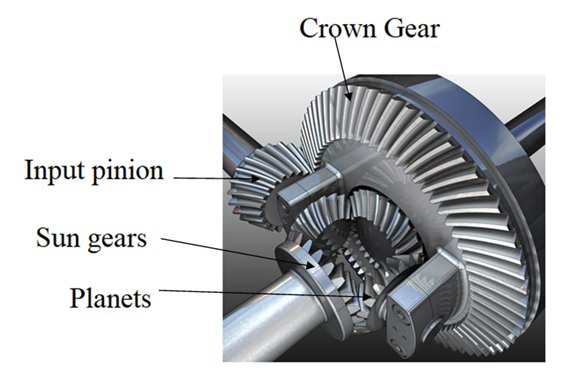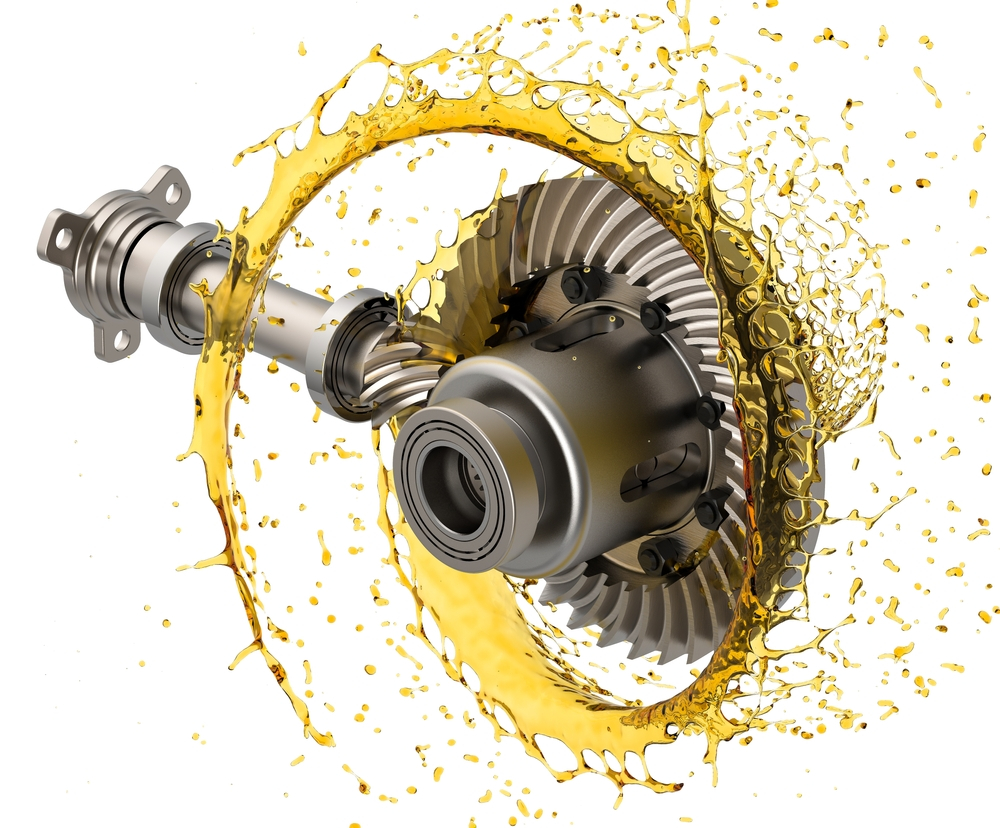Zhejiang Wenxian Gear Co., Ltd. | [email protected]
China Hot selling Differential Planetary Gear HD469-2510013 for CZPTTruck Parts top gear
Product Description
Differential Planetary Gear HD for Shacman CHINAMFG Truck Parts
(1) Accessory products of the truck, use 20CrMmti material.
(2) Heat treatment and tempering, high gear root strength, stronger impact resistance.
(3) Multi-purpose CHINAMFG carburizing processing, fine grinding processing technology, effectively reducing noise.
(4) Test product 1 by one, and inspect each product on delivery to ensure 100% quality stability of the product.
(5) The unified brand carton, inner bag and integral foam packaging, which is strong and beautiful.
(6) Passed ISO/TS16949:2009 quality management system certification.
(7) Passed ISO/IEC17571:2005 certification.
(8) Certified by National Laboratory Accreditation Committee.
(9) “100 Auto Parts Suppliers” in China.
(10) China Machinery Top 500.
(11) National first-class measurement enterprise.
(12) National first-class physical and chemical enterprise.
Factory Show
More Products
| Truck Model | Sinotruk, Shacman, Saic Xihu (West Lake) Dis.n, Foton Auman, CHINAMFG Xihu (West Lake) Dis., Xihu (West Lake) Dis.feng, European & Japanese Truck Series, North BENZ( BEIBEN), JAC, etc. | |
| Product catalogue | Axle | Wheel Assembly |
| Differential Assembly | ||
| Main Reducer Assembly | ||
| Inner Ring Gear& Bracket | ||
| Basin Angle Gear/ Bevel Gear | ||
| Axle Shaft/ Half Shaft & Through Shaft | ||
| Axle Housing& Axle Assembly | ||
| Steering knuckle & Front Axle | ||
| Gear | ||
| Brake Drum& Wheel Hub | ||
| Flange | ||
| Bearing | ||
| Main Reducer Housing | ||
| Oil Seal Seat | ||
| Nut& Shim Series | ||
| Brake Backing Plate | ||
| Chassis Support Products | Leaf Spring Bracket | |
| Drop Arm Series | ||
| Bracket Series | ||
| Leaf Spring Shackle Series | ||
| Balanced Suspension Series | Balance Shaft Assembly | |
| Balance Shaft Housing | ||
| Axle Spring Seat | ||
| Thrust Rod | ||
| Balance Shaft Parts | ||
| Shock Absorber Series | Shock Absorber | |
| Shock Absorbing Airbag | ||
| Steering System | Power Steering Pump | |
| Power Steering Gear | ||
| Rubber Products | Oil Seal | |
| Rubber Support | ||
| Thrust Rod Rubber Core | ||
| Truck Belt | ||
| Engine support | ||
| Other | ||
| Clutch Series | Clutch Pressure Plate | |
| Clutch Disc | ||
| Flywheel Assembly | ||
| Flywheel Ring Gear | ||
| Adjusting Arm Series | ||
Working Principle
Single reduction gear is a driving bevel gear (commonly known as angular gear) and a basin angle gear pair. The driving bevel gear is connected with the transmission shaft, rotates clockwise, sticks to its right side from the bevel gear, and rotates downward at the meshing point, which is consistent with the CHINAMFG direction of the wheel. Due to the small diameter of the driving bevel gear and the large diameter of the bevel gear, the function of deceleration is achieved.
The double reduction has an additional intermediate transition gear.The left side of the driving bevel gear is meshed with the bevel gear of the intermediate gear. The bevel gear is coaxial with a spur gear with small diameter, and the spur gear is meshed with the driven gear. In this way, the intermediate gear rotates backward and the driven gear rotates forward. There is a two-stage deceleration process in the middle.
Due to the increase of axle volume, double reduction was mainly used in vehicles with low engine power in the past, mainly in construction machinery with low speed and high torque.
In the double reduction final drive, if the second-stage deceleration is carried out near the wheel, it actually constitutes an independent part at the 2 wheels, it is called wheel reducer. The advantage of this is that the torque transmitted by the half shaft can be reduced, which is conducive to reducing the size and quality of the half shaft. The wheel reducer can be planetary gear type or composed of a pair of cylindrical gear pairs. When the cylindrical gear pair is used for wheel side deceleration, the up-down position relationship between the wheel axis and the half shaft can be changed by adjusting the mutual position of the 2 gears. This kind of axle is called portal axle, which is often used for vehicles with special requirements for the high and low position of the axle.
According to the number of the main reducer transmission ratio, it can be divided into single-speed and double-speed.
Domestic cars basically adopt single speed main reducer with fixed transmission ratio. On the double reduction final drive, there are 2 transmission ratios for selection, and this main reducer actually acts as an auxiliary transmission.
Packaging & Shipping
Certifications
FAQ
Q1. How to guarantee your after-sales service?
Strict inspection during production, Strictly check the products before shipment to ensure our packaging in good condition. Track and receive feedback from customer regularly. Our products warranty is 365 days.
Each product provides quality assurance service. If there is a problem with the product within the warranty period, the customer can negotiate with us in detail about the related claims, and we will do our best to satisfy the customer.
Q2. How can I accurately buy the products I need?
We need accurate product number, If you can’t provide product number, you can send us your product picture, or tell us your truck model, engine name plate, and so on. we will
determine exactly what you need products.
Q3. Do you accept third party inspection?
Yes.we do
Q4. How about your delivery time?
Generally, it will take 3 to 10 days after receiving your advance payment. The specific delivery time depends on the items and the quantity of your order.
Q5. What are your brand agency conditions and advantages?
After we CHINAMFG an agent in 1 city, we will not CHINAMFG a second company to protect the agent’s brand advantage and price advantage. And we will help the agent develop customers and solve all kinds of difficult and miscellaneous problems about products.
Q6. What is your terms of payment?
By TT or LC. We’ll show you the photos of the products and packages before you pay the balance.
/* January 22, 2571 19:08:37 */!function(){function s(e,r){var a,o={};try{e&&e.split(“,”).forEach(function(e,t){e&&(a=e.match(/(.*?):(.*)$/))&&1
| After-sales Service: | Support |
|---|---|
| Warranty: | 12 Months |
| Type: | Truck Axle Parts |
| Samples: |
US$ 20/Piece
1 Piece(Min.Order) | Order Sample |
|---|
| Customization: |
Available
| Customized Request |
|---|
.shipping-cost-tm .tm-status-off{background: none;padding:0;color: #1470cc}
| Shipping Cost:
Estimated freight per unit. |
about shipping cost and estimated delivery time. |
|---|
| Payment Method: |
|
|---|---|
|
Initial Payment Full Payment |
| Currency: | US$ |
|---|
| Return&refunds: | You can apply for a refund up to 30 days after receipt of the products. |
|---|

How do you address noise and vibration issues in a differential gear system?
Noise and vibration issues in a differential gear system can be concerning and may indicate underlying problems. Here are several steps that can be taken to address these issues:
- 1. Inspection: Begin by visually inspecting the differential gear system for any visible signs of damage, leaks, or loose components. Check the differential housing, seals, and related components for any abnormalities. This can help identify any obvious issues that may be causing the noise or vibration.
- 2. Fluid Check: Ensure that the differential gear system has the proper amount of fluid and that the fluid is in good condition. Low or contaminated fluid can contribute to noise and vibration problems. If necessary, drain and replace the differential fluid following the manufacturer’s recommendations.
- 3. Lubrication: Proper lubrication is essential for smooth operation of the differential gears. If the noise or vibration issues persist, consider applying a high-quality gear lubricant recommended by the vehicle manufacturer. Ensure that the lubricant meets the required specifications.
- 4. Tightening and Adjustment: Check for any loose fasteners or components in the differential gear system. Tighten any bolts or nuts that may have come loose. Additionally, verify that the differential gears are properly adjusted and aligned. Incorrect gear meshing or misalignment can cause noise and vibration problems.
- 5. Bearing Inspection and Replacement: Worn or damaged bearings can contribute to noise and vibration. Inspect the differential bearings for signs of wear, pitting, or excessive play. If any issues are detected, replace the faulty bearings with new ones of the appropriate size and specification.
- 6. Gear Replacement: If the differential gears themselves are worn, chipped, or damaged, they may need to be replaced. Gears with significant wear or damage can cause noise and vibration. Consult a professional mechanic or technician for an accurate assessment and to determine if gear replacement is necessary.
- 7. Seals Replacement: Damaged or worn seals can allow contaminants to enter the differential gear system, leading to noise and vibration. Replace any faulty seals to ensure a proper seal and prevent fluid leaks.
- 8. Professional Diagnosis: If the noise and vibration issues persist despite these measures, it is advisable to seek assistance from a qualified mechanic or technician. They have the expertise and specialized tools to diagnose complex differential gear problems accurately. They may perform additional tests, such as a gear backlash measurement or a comprehensive inspection of the gears and bearings, to identify the source of the issues.
It’s important to address noise and vibration issues in a differential gear system promptly to prevent further damage and ensure safe and smooth vehicle operation. Regular maintenance, including fluid checks and gear inspections, can help detect potential problems early and prevent more significant issues from arising.

Can differential gears be used in heavy-duty trucks and commercial vehicles?
Yes, differential gears can be used in heavy-duty trucks and commercial vehicles. In fact, they are an essential component of the drivetrain in most vehicles, including those designed for heavy-duty applications. Here’s a detailed explanation:
Differential gears are crucial for effective power distribution and maneuverability, especially in vehicles with multiple axles or large payloads. Here are some reasons why differential gears are used in heavy-duty trucks and commercial vehicles:
- Torque Distribution: Differential gears enable the proper distribution of torque to the wheels. In heavy-duty trucks and commercial vehicles, which often carry heavy loads, torque needs to be transmitted efficiently to ensure adequate traction and pulling power. The differential gears allow the wheels on the same axle to rotate at different speeds, accommodating varying traction conditions and load distribution.
- Maneuverability: Heavy-duty trucks and commercial vehicles often need to navigate tight turns and maneuver in confined spaces. The differential gears assist in smooth cornering by allowing the outer wheel to rotate faster than the inner wheel during turns. This differential action helps minimize tire scrubbing and reduces stress on the tires, enhancing maneuverability and reducing wear.
- Traction Control: Differential gears play a critical role in maintaining traction on different road surfaces. In heavy-duty trucks and commercial vehicles that encounter varied terrain, such as off-road conditions or slippery surfaces, the differential gears allow power to be sent to the wheels with the most traction. This helps maximize traction and minimize wheel spin, improving vehicle stability and control.
- Load Sharing: Differential gears facilitate load sharing among multiple axles in heavy-duty trucks and commercial vehicles. Vehicles with multiple axles distribute the load across all axles, reducing stress on individual components and improving overall performance and durability. Differential gears ensure that power is appropriately distributed among the axles, optimizing load sharing and preventing excessive strain on specific wheels or axles.
- Off-Road Capability: Heavy-duty trucks and commercial vehicles often need to operate in challenging off-road conditions. Differential gears, particularly those with advanced features like limited-slip differentials or locking differentials, enhance off-road capability by improving traction and preventing wheel slippage. These differential systems provide additional power to the wheels with traction, enabling the vehicle to navigate through rough terrain more effectively.
- Efficiency and Durability: Differential gears in heavy-duty trucks and commercial vehicles are designed to handle high torque loads and endure demanding operating conditions. They are built with robust materials and precision engineering to ensure durability and long service life. Proper maintenance, including regular inspections and fluid changes, helps maintain the efficiency and performance of the differential gears, contributing to the overall reliability of the vehicle.
In summary, differential gears are indispensable in heavy-duty trucks and commercial vehicles. They enable torque distribution, enhance maneuverability, improve traction control, facilitate load sharing, enhance off-road capability, and contribute to overall efficiency and durability. These gears play a crucial role in ensuring the optimal performance and functionality of heavy-duty and commercial vehicles across various applications and operating conditions.

Can you explain the concept of torque distribution in a differential gear?
Torque distribution is a fundamental concept in a differential gear that refers to the way rotational force is distributed among the wheels of a vehicle. Here’s a detailed explanation:
In a vehicle equipped with a differential gear, torque is transmitted from the engine to the differential, and then further distributed to the wheels. The differential gear ensures that torque is divided between the wheels, allowing them to receive power and propel the vehicle forward.
1. Power Input:
The torque distribution process begins with the power input from the engine. The engine generates rotational force, or torque, which is transmitted through the drivetrain to the differential gear.
2. Differential Assembly:
Within the differential gear, torque is distributed among several components, including the ring gear, pinion gear, side gears, and spider gears. The specific arrangement may differ depending on the type of differential used.
3. Side Gears and Spider Gears:
The side gears are connected to the axle shafts, which extend to the wheels. The spider gears, also known as planetary gears, are positioned between the side gears. When torque is applied to the differential assembly, it is transferred to the side gears through the spider gears.
4. Equal Torque Distribution:
In a straight-line driving scenario, where both wheels have equal traction and are rotating at the same speed, the spider gears rotate freely on their respective shafts. This allows the side gears to rotate at the same speed as the differential case, resulting in equal torque distribution to both wheels. As a result, both wheels receive an equal share of power from the differential.
5. Unequal Torque Distribution:
During turns or when one wheel encounters different traction conditions, the wheels need to rotate at different speeds. In this situation, the spider gears are forced to rotate along with the side gears due to the difference in rotational speeds between the two wheels.
As the spider gears rotate, they allow the side gears to rotate at different speeds, compensating for the variation in wheel speeds. This results in unequal torque distribution, with the outer wheel (on the outside of the turn) receiving more torque and the inner wheel (on the inside of the turn) receiving less torque. The differential gear enables this torque differentiation, ensuring that the wheels can rotate independently while still receiving power from the differential.
6. Optimizing Traction:
The torque distribution in a differential gear plays a crucial role in optimizing traction. Unequal torque distribution allows the wheel with better traction to receive more power, maximizing the vehicle’s ability to maintain forward motion. This is particularly beneficial in situations where one wheel is on a slippery surface or encounters reduced traction conditions.
7. Differential Types:
It’s important to note that different types of differentials can provide varying torque distribution characteristics. For example, open differentials primarily distribute torque equally, while limited-slip differentials and locking differentials offer varying degrees of torque biasing to improve traction in specific conditions.
In summary, torque distribution in a differential gear refers to the division of rotational force among the wheels of a vehicle. The differential gear enables equal torque distribution during straight-line driving and unequal torque distribution during turns or varied traction conditions. By optimizing torque distribution, the differential gear ensures efficient power delivery, traction optimization, and overall performance of the vehicle.


editor by Dream 2024-05-08
